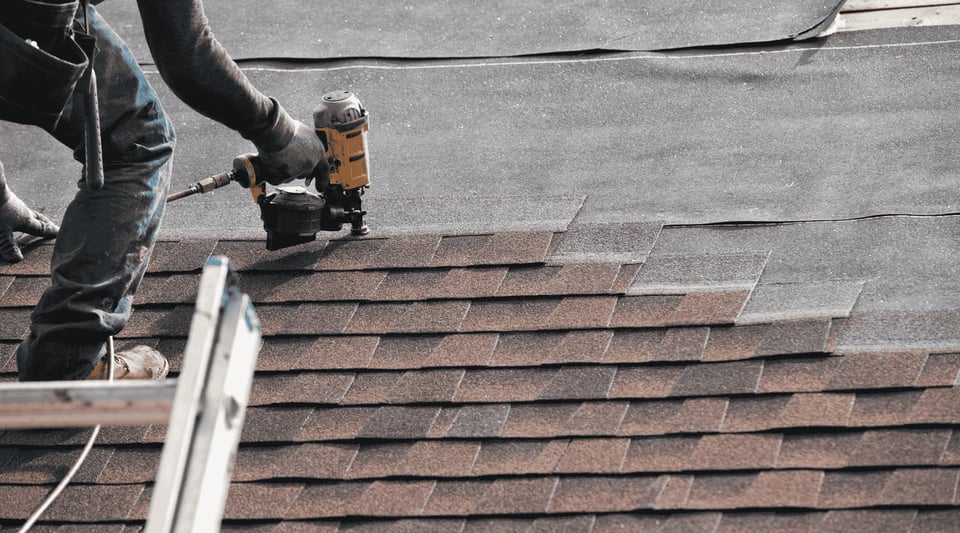What is Roof Underlayment & Is It Necessary in Arizona?

When it comes to protecting your home from the elements, the roofing material you see from the street (shingles, tile, or metal) is just one part of the system. Hidden beneath the surface is a critical component that doesn’t always get the attention it deserves: roof underlayment.
So, what is underlayment for a roof? Is it something Arizona homeowners really need? Let’s break it down.
What is a Roof Underlayment?
Roof underlayment is a protective layer installed directly on top of your roof deck and underneath your primary roofing material. Its purpose is to act as a second line of defense against moisture, wind, and extreme weather. If rain or dust gets past the outer layer of your roof, the underlayment is there to keep it from reaching the wood decking—and ultimately, your home’s interior.
There are several types of underlayment for roofs, each with different benefits depending on your climate, roofing material, and budget.
Is a Roof Underlayment Necessary?
Absolutely. Believe it or not - especially in Arizona! While it’s easy to assume that roof underlayment is only important in rainy or snowy climates, Arizona’s extreme heat and monsoon storms make it just as essential. Here's why:
- Protection Against Water Infiltration: We’ve seen homes in Scottsdale and Prescott where monsoon winds forced water under perfectly good roof tiles and shingles. Thankfully, the underlayment caught it before any damage reached the interior.
- Heat Resistance: Arizona roofs are exposed to high temperatures for most of the year. A good underlayment can improve your roof’s ability to withstand UV rays and reduce heat penetration.
- Code Compliance: In most cities across Arizona, building codes require the installation of a roof underlayment for safety and performance reasons.
Skipping the underlayment or choosing the wrong type can lead to premature roof failure, mold growth, and costly repairs down the line.
How Long Does Roof Underlayment Last in Arizona?
Even the best underlayment doesn’t last forever—especially under Arizona’s harsh sun. On average, the lifespan of roof underlayment depends on the material:
- Felt underlayment: Typically lasts 10–15 years, though extreme heat can shorten that window.
- Synthetic underlayment: Can last 20–30 years or more, thanks to its UV and heat resistance.
Rubberized asphalt (peel-and-stick): Offers a longer lifespan and superior waterproofing, often 25–30+ years.
It’s also important to note that tile roofs in Arizona may outlast the underlayment beneath them. Many homeowners assume that if the tiles still look good, the roof is fine—but what’s underneath could be deteriorating. That’s why regular inspections and maintenance are key.
If your home’s over 15 years old and you haven't had your roof inspected recently, we strongly recommend it. We’ve inspected homes in Show Low and Mesa that looked fine outside but had major underlayment failures starting to form.
Best Underlayment Options for Arizona Homes
Not all underlayment products are created equal. In Arizona’s unique climate, choosing the right material is key to long-term performance.
Here are the most common types of underlayment for roofs in Arizona, and when each one is most effective:
Asphalt-Saturated Felt (Felt Paper)
- Pros: Budget-friendly and widely available
- Cons: Less durable in extreme heat; can break down faster under tile roofs
- Best For: Low-cost re-roofing projects or temporary coverage
While still used today, this “traditional” underlayment is gradually being replaced by more advanced synthetic options due to its shorter lifespan.
Synthetic Underlayment
- Pros: Lightweight, tear-resistant, UV resistant, and designed to last longer
- Cons: Slightly higher cost
- Best For: Most Arizona homes, especially those with shingle or tile roofs
Synthetic underlayment is a popular choice for its durability and ability to handle Arizona’s fluctuating temperatures. It also holds up better during installation, especially in windy or high-traffic areas.
Rubberized Asphalt (Peel-and-Stick)
- Pros: Superior waterproofing, self-sealing, excellent for leak-prone areas
- Cons: More expensive; can be overkill for some applications
- Best For: Low-slope sections, roof valleys, eaves, and other high-risk areas
This type of underlayment is often used as an additional layer in problem spots to boost protection where water is more likely to accumulate or infiltrate.
Investing in the Right Protection
While your choice of shingles or tiles plays a big role in your roof’s appearance and performance, the underlayment is what keeps your roof structure protected long-term. And in Arizona’s unique mix of heat, dust, and storm activity, installing the right underlayment is more than just a smart choice—it’s a necessity.
At Paragon Contracting, we know how to build roofs that stand up to Arizona’s extreme climate. Whether you’re re-roofing your home or building from the ground up, our team will help you select the best underlayment for your roof based on your home’s design, roofing material, and budget.
Need a roof inspection or underlayment upgrade? Contact Paragon Contracting today for expert roofing services in Arizona that you can trust.



